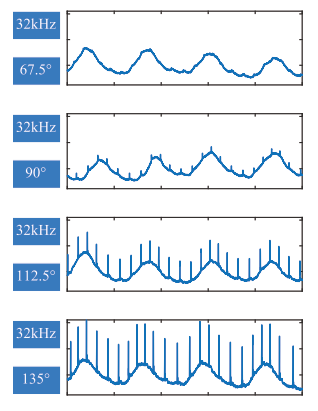Other Parts Discussed in Thread: ADS1296R,
Hi,
In my system I use an ADS1296R to measure three channels of ECG and one channel for respiration. Everything looks promising. But sometimes I see sharp peaks in the impedance measurement (for respiration) that I believe are related to heart activity. I'd like hear your ideas.
1- Is it normal?
2- What can be done to suppress it? I know that filtering the signals with a 1Hz low-pass filter will remove those sharp peaks completely. But is there any way to skip this filter, at least for monitoring purposes?
3- What is the theoretical reason behind it?
I ran a test with all the different modulation phase delays, and the result showed that with modulation frequency of 32 kHz and phase of 62.5 degrees, the peaks disappear. This is while the datasheet claims that a phase of 112.5 results in the best performance, at least from the noise point of view. However, I know that the results would differ with different subjects and electrode locations. Please comment on this too.
Update:
Here are some examples about those peaks:


